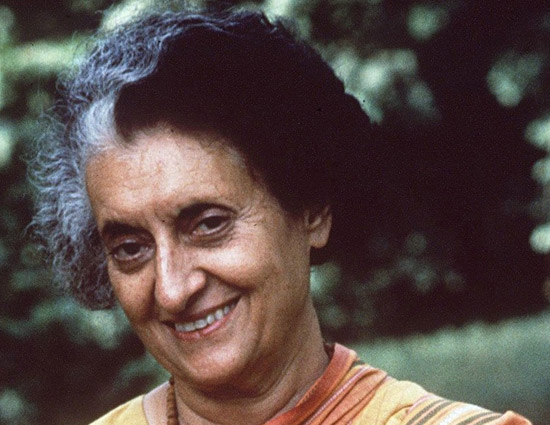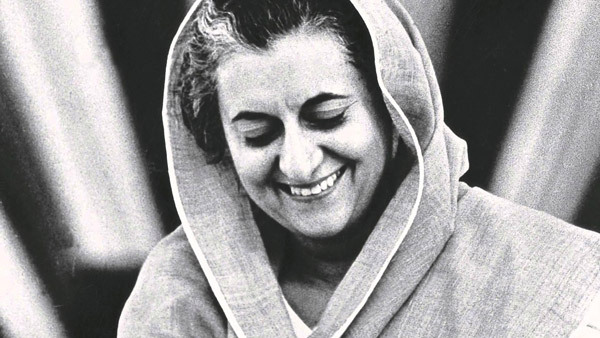The History Of Smt. Indira Gandhi
By: Pinki Thu, 16 Nov 2017 1:37:12

Born on November 19, 1917 in an illustrious family, Smt. Indira Gandhi was the daughter of Pt. Jawaharlal Nehru. She studied at prime institutions like Ecole Nouvelle, Bex (Switzerland), Ecole Internationale, Geneva, Pupils' Own School, Poona and Bombay, Badminton School, Bristol, Vishwa Bharati, Shantiniketan and Somerville College, Oxford. She was conferred Honorary doctoral degree by a host of Universities globally. With an impressive academic background she also got the Citation of Distinction from the Columbia University. Smt. Indira Gandhi was actively involved in the freedom struggle. In her childhood, she founded the 'Bal Charkha Sangh' and in 1930, the 'Vanar Sena' of children to help the Congress party during the Non-Cooperation Movement. She was imprisoned in September 1942, and worked in riot-affected areas of Delhi in 1947 under Gandhi's guidance.
She got married to Feroze Gandhi on March 26, 1942 and had two sons. Smt. Gandhi became a Member, Congress Working Committee and Central Election of the party in 1955. In 1958 she was appointed as a Member for Central Parliamentary Board of Congress. She was the Chairperson, National Integration Council of A.I.C.C. and President, All India Youth Congress, 1956 and Women's Dept. A.I.C.C. She became the President, Indian National Congress in 1959 and served till 1960 and then again from January 1978.
She had been Minister for Information and Broadcasting (1964- 1966). Then she held the highest office as the Prime Minister of India from January 1966 to March 1977. Concurrently, she was the Minister for Atomic Energy from September 1967 to March 1977. She also held the additional charge of the Ministry of External Affairs from September 5, 1967 to February 14, 1969. Smt. Gandhi headed the Ministry of Home Affairs from June 1970 to November 1973 and Minister for Space from June 1972 to March 1977. From January 1980 she was Chairperson, Planning Commission. She again chaired the prime Minister's Office from January 14, 1980.

Smt. Indira Gandhi was associated with a large number of organisations and institutions, like Kamala Nehru Memorial Hospital, Gandhi Smarak Nidhi and Kasturba Gandhi Memorial Trust. She was the Chairperson of Swaraj Bhavan Trust. She was also associated with Bal Sahyog, Bal Bhavan Board and Children's National Museum in 1955. Smt. Gandhi founded the Kamala Nehru Vidyalaya in Allahabad. She was also associated with certain big institutions like Jawaharlal Nehru University and North-Eastern University during 1966-77. She also served as a Member of Delhi University Court, Indian Delegation to UNESCO (1960-64), Member, Executive Board of UNESCO from 1960-64 and Member, National Defence Council, 1962. She was also associated with Sangeet Natak Academy, National Integration Council, Himalayan Mountaineering Institute, Dakshina Bharat Hindi Prachar Sabha, Nehru Memorial Museum and Library Society and Jawaharlal Nehru Memorial Fund.
Smt. Gandhi also became a Member of Rajya Sabha in August 1964 and served till February 1967. She was the Member of Lok Sabha during fourth, fifth and sixth sessions. She was elected to the Seventh Lok Sabha from Rae Bareli (U.P.) and Medak (Andhra Pradesh) in January 1980. She chose to retain the Medak seat and relinquished the Rae Bareli seat. She was chosen as the leader of the Congress Parliamentary Party in 1967-77 and again in January 1980.
Interested in a wide array of subjects, she viewed life as an integrated process, where activities and interests are different facets of the whole, not separated into compartments or labelled under different heads.
She had many achievements to her credit. She was the recipient of Bharat Ratna in 1972, Mexican Academy Award for Liberation of Bangladesh (1972), 2nd Annual Medal, FAO (1973) and Sahitya Vachaspati (Hindi) by Nagari Pracharini Sabha in 1976. Smt. Gandhi also received Mothers' Award, U.S.A. in 1953, Islbella d'Este Award of Italy for outstanding work in diplomacy and Yale University's Howland Memorial Prize. For two consecutive years in 1967 and 1968 she was the woman most admired by the French according to a poll by the French Institute of Public Opinion. According to a special Gallup Poll Survey in the U.S.A. in 1971 she was the most admired person in the world. Diploma of Honour was conferred to her by the Argentine Society in 1971 for the Protection of Animals.




-1713439689-lb.jpg)
